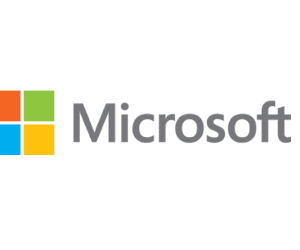As the healthcare industry continues to move toward cloud-based services and technology, providers are exploring migrations of their electronic health record applications to public cloud environments, where advantages include lower costs, improved flexibility and integration with new technologies.
Healthcare organizations using the EHR platform Epic can consider migrating to Azure, Microsoft’s cloud infrastructure, for everything from disaster recovery (DR) to a more complete hosting of their Epic production environments.
Given the importance of EHRs to healthcare providers’ overall operational capabilities, drawing on the planning expertise of a partner is critical, says Sam Baker, a business development manager for CDW focusing on Microsoft technologies in healthcare.
Baker notes that cloud deployment facilitates innovation and data interoperability by placing an EHR and its related data in proximity to advanced cloud-native tools such as Azure OpenAI and Microsoft Fabric.
DISCOVER: Microsoft Azure supports forward-looking IT strategies for healthcare.
This proximity accelerates the exploration, deployment and scaling of innovative approaches to solution development.
Baker says that this helps clients to foster a culture of innovation and enable the exploration of more evolved IT practices.
“Reliability, scalability, automation, cost optimization, security and access to new technology are among the primary benefits healthcare organizations will see by moving Epic to Azure,” he explains. “They can effectively scale in a financially optimized way. The infrastructure is available and waiting for them in an Azure data center.”
He points to DR as a significant area where moving to a cloud-based solution can provide multiple benefits for healthcare organizations.
“When you have DR infrastructure as part of the on-premises data center, you have a second data center, a very expensive insurance policy in the event you’re hit with a ransomware attack and you need to fail over,” he says.
By moving that DR infrastructure to the cloud, healthcare organizations can turn off that capacity.
“This means you’re not paying for what you’re not using. You can shut off that infrastructure and save substantial costs on your DR spending and DR infrastructure cost,” Baker says. “This ‘pilot light’ scenario is specifically enabled through the cloud and does exist on-prem.”
Click below to learn how to optimize healthcare’s connection to the hybrid cloud.
Generative AI Capabilities Boost Healthcare Productivity
Thanks to Microsoft and Epic’s established partnership, the two companies continue to strengthen their integration.
One recent example is Microsoft’s growing partnership with OpenAI and Epic, which enables the integration of generative artificial intelligence technology into the company’s EHR software.
Baker says that being able to integrate AI or large language models can help improve decision-making processes and reduce physician burnout brought on by the often cumbersome nature of EHR management.
“There’s a lot of promise in optimizing workflow, making things more efficient, enabling the opportunity to use the data in the EHR effectively and sift through it very quickly, for example in clinical-decision support,” he says. “Many of the opportunities being presented by today’s health IT thought leaders are not achieved by default when moving Epic to Azure, but may be easier to achieve when an organization sets a foundation of innovation, rapid deployment and data stewardship by leveraging cloud and cloud-native technologies.”
LEARN MORE: Cook Children’s begins cloud migration journey with disaster recovery.
The Benefits of Trusted Partners When Migrating to the Cloud
CDW’s capability and practice in Epic on Azure has been led and organized by Doug McMillian, former CISO and interim CTO of Cone Health.
As a part of that IT leadership team, McMillian and Cone were the first to migrate Epic DR, production environments and non-production environments to Azure. His experience as a health system leader navigating the challenges of migrating Epic to Azure had a major influence on how CDW has structured its portfolio to help clients through an initiative such as this.
Baker says that CDW’s comprehensive framework guides organizations through their cloud journeys by starting with a strategic understanding of their drivers, goals and governance requirements.
“It is also so essential to understand Epic at a granular level,” Baker says. “Many partners can execute effective cloud migrations, but they may not understand the nuances of Epic, which is the most critical component of so many of our healthcare clients’ IT infrastructures.”
As part of this process, CDW conducts thorough discovery to assess existing on-premises infrastructure and EHR-integrated applications, developing a roadmap to design a cloud foundation and systematically migrate applications or infrastructure.
“This process includes preparing the cloud, rolling out the transition and operationalizing the new environment,” he says.
This approach prioritizes knowledge transfer, empowering organizations to understand and manage their cloud ecosystems efficiently, typically following a structured time frame of between one to two years.
“We’ll build it with our clients, and we’ll give them the keys to the kingdom, but we’ll also teach them how to run that kingdom so that they can help determine what moving to the cloud is going to mean for them,” he says.
Advantages of Infrastructure as Code for Healthcare
Baker says that as the process moves to the four- to six-month process of building Epic in the cloud and the cloud preparation time is finished, CDW’s focus on automation and Infrastructure as Code can help with a seamless and consistent deployment.
IaC is a practice that involves managing and provisioning computing infrastructure through machine-readable script files, allowing for automated and consistent deployment and configuration.
“One of the reasons we’re really good at working with so many clients on Epic on Azure initiatives is because we have the infrastructure components ready to roll out through IaC,” Baker explains. “Deploying the Azure landing zone in Epic is actually the easiest part because we have it written as IaC. We can roll this infrastructure out in minutes.”
He points to CDW’s strong relationship with Microsoft as another advantage the company has when bringing Epic to Azure.
“The fact that we have had this relationship for years now means that we also have that knowledge of the new technologies being developed — integration of OpenAI is just one example — and what’s going to be built for the future,” Baker says.
Brought to you by:













